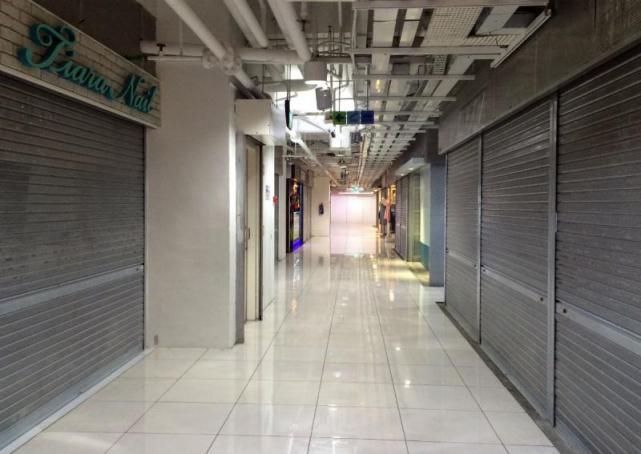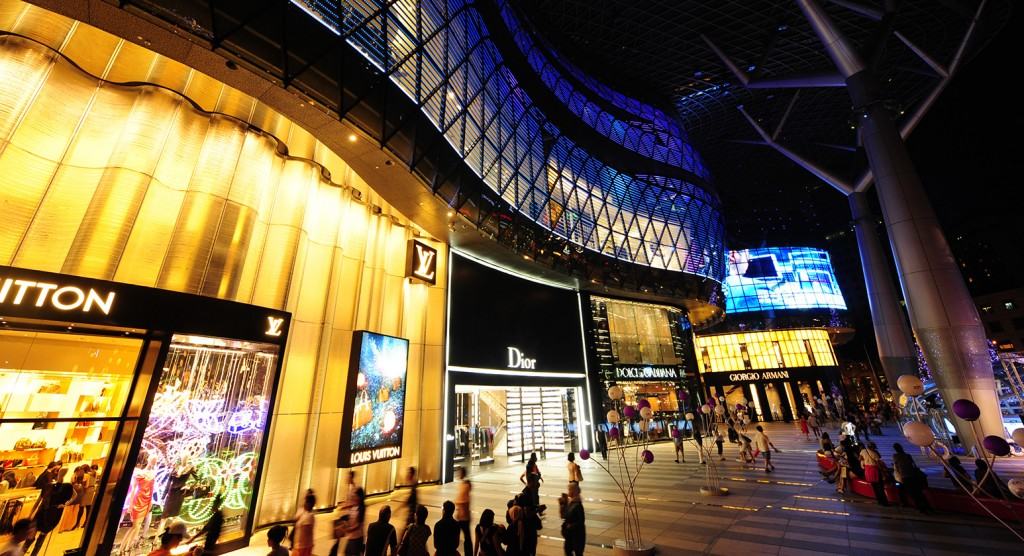Our malls are on a downward roll
Singapore’s name as a shopping haven might be taking a bit of a hit, as retail malls are not only not thriving but are kicking and screaming just to stay afloat.
In a report by Bloomberg, vacancies in the Orchard Road shopping district have risen to a five-year high and have skyrocketed to a new high across the country since 2009. The article stated that Singapore seemed to be no longer a shoppers’ paradise as more and more empty storefronts surface — and it does not seem like it is going to take a turn for the better anytime soon.
Reasons for this trend is attributed to the sluggish economic growth in the region; Consumers are reining in their spending budget and more retailers are expected to close shop. Southeast Asia Globe says the economic slowdown is the major contributing factor.
According to Today, an uncertain job market also means consumers are restricting their spending, and tenants are reporting lower earnings even during the festive periods. Landlords at Reit-owned malls such as Jurong Point, Nex, Northpoint and AMK Hub, are pulling out all the tricks in their bag like promotions and loyalty programmes to encourage shoppers to spend..
Data from property firm Jones Lang Lasalle show that the average vacancy rate of suburban malls, including Reit-owned and strata-titled shopping centres, has more than doubled from less than 1 per cent in 2013 to 2.4 per cent in the fourth quarter of last year.
Novena Regency has 45 commercial units, and majority of them have stores that have been shuttered . Shop spaces like East Village in Simpang Bedok are dominated by restaurants and eateries, which tend to be more resilient in an economic slowdown.
Bloomberg reports that some of the biggest retailers are exiting the Singapore market. Al-Futtaim Group, the distributor in the city-state of major brands including Marks & Spencer and Zara, plans to close more stores in the city state and move on to cheaper Asian markets like Malaysia and Indonesia. British brand New Look and French menswear chain Celio have also closed their Singapore outlets.
Shop Owners Stuggling To Breakeven
According to Southeast Asia Globe, the median rental cost for a space on Orchard Road is SGD 9.82 per square-foot, or SGD 6.14 per square-foot for a less-central location. Retail space in some luxury malls can even reach SGD 16 per square-foot and beyond. Mall operators also charge their tenants a commission, taking about 10% to 20% of their revenue every month.
Peter San is the owner of Excellent Watches, a small, old-school shop across the road from the historic St. Andrew’s Cathedral. “You work so hard, and it all goes to rent,” San said. “You don’t think about making money… just break even.” None of the small business owners he knows in Singapore are making much profit.
Even though the F&B industry is a tad more resilient despite the sluggish economy, it also has its challenges.
“It’s at the point where most F&B outlets are looking at rent being 25% to 30% of their revenue. With staff costs and food costs, that leaves you with sliver-thin margins,” said Singapore celebrity Mod-Sin chef Shen Tan.
“From an ecosystem point of view, how do you survive? How do you put out food at SGD3 [$2.10], or SGD5 [$3.50], or whatever, and pay rent and your utilities? What’s left at the end of the day? It just gets to a point where you start to question why you’re doing it,” she added.
In statistics released by the Urban Redevelopment Authority (URA), rentals and prices have gone down in a bid to combat the trend, and it shows that vacancy rate has increased to 8.4%.
Why It’s Not Going To Change
This seems like a positive trend but something is more worrying, according to Vulcan Post, is that many projects are already in the pipeline. Construction is still happening throughout the year for new office buildings, condominiums, and shopping malls, and retail space is set to increase exponentially during 2017 and in 2018.
URA figures show that 182,000 square-metres of retail space is to be constructed in 2017, and an alarming 234,000 square-metres expected for 2018.
More retail space set to be ready for more stores that are pulling out of the market. This just spells trouble.
On top of that, many smaller businesses are focusing on e-commerce to save on costs.
Bloomberg noted that Singaporeans are also among the most tech-savvy shoppers in Asia; There are many more online shoppers here than in Hong Kong and Malaysia.
“Retail is changing because of e-commerce and malls will need to re-position themselves to cater for the future,” said John Lim, chief executive officer at ARA Asset Management, which owns malls in Singapore, Hong Kong and Malaysia. He feels that malls will need to remodel to focus more on food-and-beverage outlets, entertainment, services and banking, and less on fashion and consumer products.
Retail Malls Into Office Spaces
Due to this downward trend, many retail spaces have been used as office spaces instead. Bukit Timah Plaza, Katong Shopping Centre and more have been rented out for office use instead.
“The economy is down, so a lot of people are earning through office space rather than using a shophouse as a retailer,” said Janice Leong, a real estate agent who deals in commercial property.
According to Pioneer Training, construction works are in progress to redevelop Park Mall into an office building by the end of 2019. When completed, the 9 Penang Road building will be transformed into two wings, with eight levels of office space across 352,000 square feet net lettable area and 15,000 square feet of retail space on one floor.
Tourists May Save Our Malls
There may be a drop in expenditure from local shoppers, but not for tourists it seems, who still regard Singapore as a one-stop shopping destination.
According to Vulcan Post, we are among the top ten cities that tourists from China travel to. Singapore Tourism Board’s statistics show that there was a 40.8% increase in Chinese tourists from 2015 to 2016 — and 2017 can only be expected to welcome more. From the period of January to September in 2016, Singapore had a staggering 2,270,407 Chinese visitors. Shopping accounts for 46% of tourism receipts from them and 2015’s figures puts their spending at $1.15 billion.
However, this is only a temporary band-aid. If consumer spending by locals continue to decline and more retail spaces are popping up on top of the already exorbitant rental rates, our malls are just on a downward roll.


















